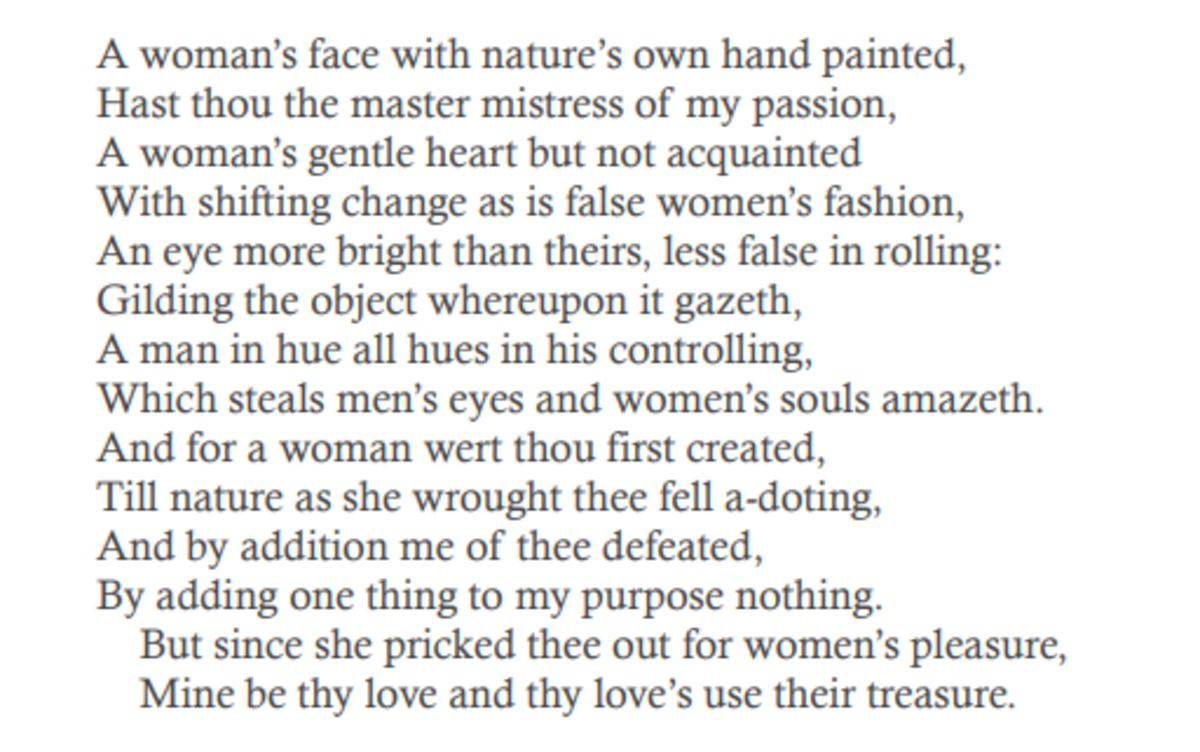

like I did in my couplet when I wrote “will I do” instead of “I will do” You might have to invert the order of a word or two to keep those beats clear.

This means the important words/ sylables need to be on those beats. Remember, in a normal Iambic line, every other beat (2, 4, 6, 8, and 10) are emphasized. Make sure the important words are on the right beats.I often find it helps to just get a piece of paper, write as much as possible to express the three ideas in your sonnet in prose, then get down to translating your ideas into iambic pentameter. Tip 3: Writing Poetry Now that you have the ideas you want to express now comes the hard part: putting them into poetry. For example, here’s a couplet I wrote about preparing breakfast in bed and doing chores for one’s wife on Mother’s Day.Īll chores this day will I do in thy steadĬommence I shall with breakfast in thy bed! Just like a English paper, a good conclusion is very important, which is why it’s it’s often useful to work on this these two lines first before you get into writing the meat of your sonnet. Tip 2: Plan Out The Rhyming Couplet: As I mentioned before, the last two lines of every sonnet are called a rhyming couplet two lines of iambic pentameter that rhyme together and help conclude the sonnet.

Thank you from you, me, and our child(ren). A specific time she did something awesome for your child (give examples!)ģ. Thank you for being the mother of our child(ren)Ģ. This is the form that Shakespeare sonnets often take and I would advise you to try and make your sonnet into a clear argument.Įxample Of Sonnet Writing: Since Mother’s Day is coming up, if you wanted to write about the mother of your child, and thank her for her for being there for your child, you might want to structure your sonnet by using the three stanzas to express three simple ideas like:ġ. By contrast, Shakespeare argues that the subject of the sonnet has beauty that will last forever, particularly if that person goes on to have children. For example, Sonnet 8 pictured above, (one of Shakespeare’s most famous sonnets), begins with the question: “Shall I compare the to a summers day?” He then goes to flatter the person he’s writing about by talking about how much better they are than a summers day, saying that actual summers are too windy and too hot, and the flowers of the summer are all too brief. The three quatrains give you a chance to come up with an idea, then develop the idea, and then come to a conclusion, much like any other form of persuasive writing that you might’ve had to do for English class. It’s often useful to consider your sonnet like a speech or a short argument. These last two lines are a way of wrapping up the main idea of the poem in a short, catchy way. If it helps, you can think of this as the “But…” part of the sonnet, because it’s the part where he changes the argument using the word “but,” (and what a but it is). The sonnet then concludes with two rhymed lines of Iambic called a rhymed couplet. Usually around line 9, there is a kind of “turn” or change in the direction of the argument, like at line 9 in Sonnet 8 above, where Shakespeare stops talking about summer, and starts talking about the person to whom he’s writing. Sonnet Form A sonnet’s 14 lines are arranged into three short groups or quatrains which are four lines long. One reason Shakespeare has this rhyme pattern is to draw your attention to the last two lines, then draw the sonnet to a close with the simpler rhyme of the couplet. This is called an ABAB rhyme pattern, and it is the trickiest thing about writing a sonnet. You’ll notice that in the sonnet above, every other line rhymes except the end. So all you need is 14 lines that follow a particular rhyme scheme. I’ve written before about Iambic Pentameter, but just to be clear it’s a 10 syllable line that goes da-Dum- daDum-da-Dum-daDum-daDum. What Is A Sonnet? A sonnet is a short poem that’s only 14 lines long, written in what is called Iambic Pentameter, Shakespeare’s preferred form of poetry. I don’t want to lie it takes a lot of patience and thought to craft a sonnet, but the rules are easy to follow. If you’ve never written a sonnet, don’t worry, the kind of sonnet Shakespeare wrote is pretty easy to write, and it follows just a few simple rules. Sonnet writing has been a time honored tradition for showing the people we care about just how much they mean to us.
HOW TO WRITE A SONNET MANUAL
What follows is kind of a do-it-yourself poetry manual that would be great if you want to write a poem for a spouse or a loved one for Valentine’s Day, Christmas, Mother’s Day or any other time, to show that you care. Shakespeare wrote 154 short love poems called sonnets. Since this is national poetry month, I thought I’d talk a little bit about Shakespeare’s poetry.


 0 kommentar(er)
0 kommentar(er)
